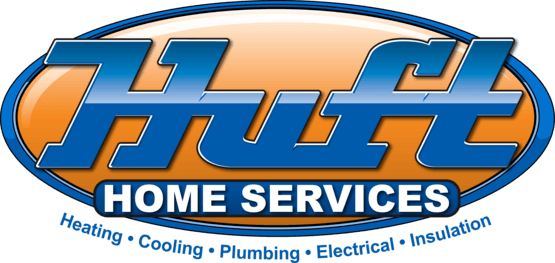As the season becomes crisp and the leaves start changing color, freezing temperatures will draw closer before you know it. As you start to stock your winter wardrobe, keep in mind that your plumbing system needs protection against these elements, too. After all, you don’t want to incur losses due to damages caused by frozen pipes.
For a little time and minimal investment, winterizing your plumbing is a sure way to keep your pipes protected throughout the cold winter season. Are you living in areas where cold winter temperatures are the norm? Read on to find the best tips to protect your plumbing system.
Insulate Pipes in Exposed Areas
When the temperatures drop, your pipes become more susceptible to freezing. Insulating your pipes provides the first line of defense against freezing temperatures and frozen pipes.
It is recommended that you insulate your pipes in all unheated areas such as crawl spaces and garages, as they’re most likely to freeze. A plumbing supply store or hardware should have the tools you need. Pipe insulation looks much like hollow swimming pool noodles. You can measure the outside diameter of the pipes to make sure that you buy the correct size of pipe insulation.
You can wrap your pipes with fiberglass or polyethylene insulation tubes. If you have pipes that froze during the previous winters, you should take extra care as these are more prone to damage—using heat tape as a part of the insulation process adds additional protection. However, make sure you follow the manufacturer’s guidelines when wrapping pipes in heat tape to avoid damage.
Wrapping your pipes with a pool noodle or a towel is an easy-to-work-with and convenient substitute for foam insulation. You can try it out, but if your home experiences regular freezing temperatures, it’s best to use insulation foam both outside and inside the home.
You should ensure that you cover every gap since even the slightest entry space for cold air can affect your pipes. Pipe insulation doesn’t only protect you from freezing; it can also save you money on hot water. Heated water becomes less hot when passing through icy plumbing systems.
Find Your Main Shutoff Valve
Although it’s easy to overlook, knowing the location of your main shutoff is a lifesaver in the case of a plumbing emergency. You can easily spot the valve near the water meter, crawl space, or in your basement, and is a ball or a gate valve. When something goes amiss, the first thing you should do is shut off your main valve.
Are you going on vacation, or do you have a vacation home that is only used in the summertime? Shut off your water valve and drain your system by opening the faucets at the house’s lowest and highest points. If it’s a vacation, ensure you leave the heat on and set it at a minimum of 55 degrees Fahrenheit, and a minimum of 59 degrees if your area is susceptible to mold. If you turn off the utilities completely in a summer home during the winter, you will want extra insulation. If you drain your pipes completely of water before leaving your home, you should not be at risk of having ice damage inside of your pipes.
Inspect Your Walls for Cracks
At some point during the autumn, spare time and inspect cracks in your walls thoroughly both outside and inside. Even the slightest crack in your wall can let frigid air into the interior of your home. Once inside, the cold air can reduce the effectiveness of your insulation, thus causing your pipes to freeze.
If you find any visible cracks in your wall, you can quickly repair them using spray foams and caulking to fill the voids.
Disconnect and Drain Outdoor Hoses
Chances are you have hoses that help you wash your car or water your garden during the warmer months. Before winter sets in, take some time to disconnect and drain your outdoor hoses.
Doing so will prevent any excess water from freezing inside your hoses over the chilly months. This also enhances the draining of frost-free outdoor hose bibbs so they can effectively function.
If you leave your hoses connected, chances are your connecting pipes and faucets might easily break unless you invest in frost-free spigots that release water through a one-way valve when it tries to expand as ice.
Keep Your Faucets Dripping
It might sound odd to leave your faucet dripping since it goes against all advice you hear about saving water and money. However, leaving a small, steady drip to flow from a vulnerable tap can prevent a burst pipe. This is a temporary solution and should not be used as a substitute for pipe insulation.
Drain Cooling Units
Your air conditioning unit is another source of potential trouble for your plumbing system. You want to completely drain your AC’s pipes and shut off its water valve if your air conditioning unit has one. If you use a heat pump for air conditioning and also for heat, you don’t need to take that step as it won’t freeze when it is in use.
Find and Repair Leaks
When the cold temperatures strike, what was once a minor annoying leak could turn into a significant problem due to the action of expanding ice. It’s a good idea to have leaky pipe joints repaired prior to a cold winter, especially if they are close enough to outside pipe sections to incur ice buildup.
If this is your first winter in a new home, now is the time to call in a licensed plumber. To be on the safe side, schedule annual maintenance that can help you discover issues before they become big problems.
Winterize Outdoor Faucets
Your outdoor spigots are a plumbing fixture that’s exposed to freezing temperatures. Though they are convenient in the summer season for filling watering cans and connecting garden hoses, outdoor faucets can freeze if you don’t correctly winterize them each year.
To effectively winterize your faucets, shut off your water supply then open the spigot outside. If you have a frost-free faucet, these steps are less critical. However, you can still shut off your water supply just to be on the safe side.
If you’re not sure whether your faucets are standard or frost-free, you can often tell which they are by holding your hose up when you shut off the valve. The water should drain backward out of the spigot if it has a frost-free valve.
Call the Professionals
Are you having a hard time insulating pipes and winterizing faucets? We’re here to help. At Huft Home Services, we’ve been serving residents in Sacramento County with comprehensive heating and air conditioning services since 2004 and we service all makes and models.
Our company is NCI-certified and BBB accredited, and we have highly experienced NATE-certified technicians. We also provide flexible financing options on approved credit. You can count on us for all your heating, plumbing, and air conditioning needs, too.
Contact Huft Home Services today to learn more about our plumbing services and get your plumbing set for the winter season.



